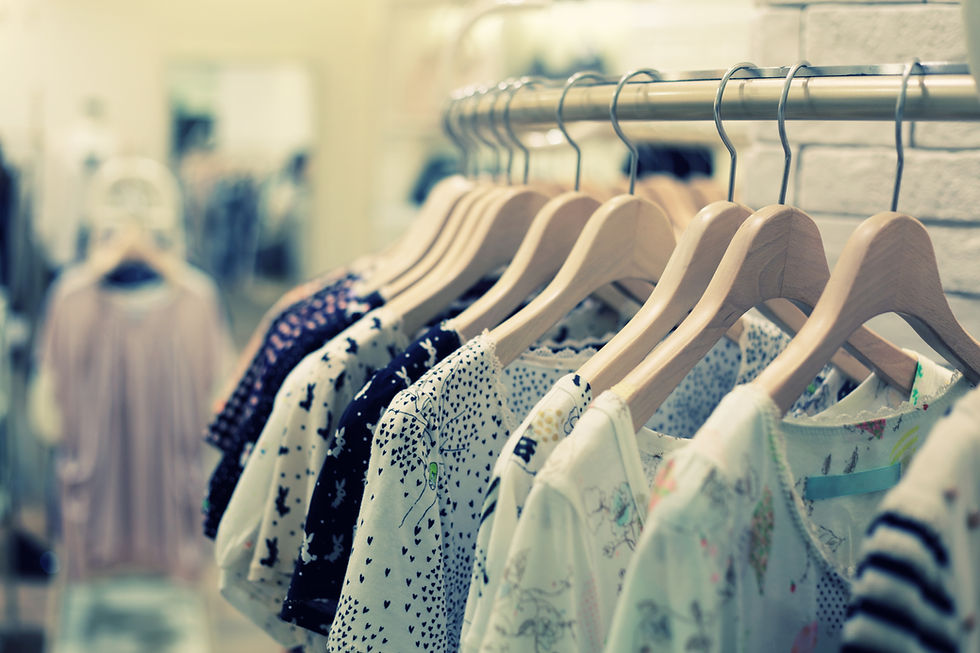Interview Dress Code: 4 Questions to Ask Yourself before Choosing What to Wear
- Stefania Revelli, CCSP, CPRW
- May 14, 2018
- 4 min read

Recently, I was in the fitting room of a mass retailer, and I was approached by a middle-aged woman wearing a short, black, linen beach cover-up with white stitching and fun tassels. She moved toward me and said “Do you think I can pull this off?” I did. “Absolutely, it looks great on you,” I answered. She replied with: “Great! I’m going to a funeral and I can’t believe the first dress I’m trying on works!” She and her beach cover up/funeral outfit left me and my hanging jaw behind.
While I’m not implying that interviews are like funerals, they are both grave environments (sorry) and you want people to be talking about you for the right reasons–like why you are qualified for the job. Your stylistic choices shouldn’t be suggestive of your business knowledge, training or abilities, but the reality is they often are.
Before you’ve even shaken hands or exchanged two words with your potential employer, they’ve already formulated an opinion of who you are based on visual choices you’ve made – from your resume font and LinkedIn profile photo to what you’ve chosen to wear to your first meeting. There’s a fine line between making an impression and making a bad impression. Or even worse—making no impression at all.
Smart interview dress doesn't have to mean defaulting to a suit
Appearances matter and in business, first appearances matter a great deal. But does that mean you should always default to the dark pantsuit and jacket? Not necessarily. It does mean making smart choices about what to wear to your first (and second) meeting with a potential employer should be an important component of your job research and preparation. A quick online search will turn up countless dos and don’ts of interview clothing, but before you commit to your interview outfit, consider these four questions:
1. Do I look like I fit in? By the time you are invited in for an interview, you should know a lot about the company you are applying to— that includes having a general idea of the office culture. Culture is core to any company and employers will be heavily evaluating whether they think you’ll fit in with the existing staff, structure and team. Much of that will be determined by your personality and soft skills, but your wardrobe has a role, too.
If you are applying for a finance position, the conventional dress suit is always a smart choice. But say you are applying for a job at a small startup where jeans and t-shirts are the weekday go-to. Walking in wearing a traditional dark suit can come across as stuffy. Of course, wearing jeans to an interview is the equivalent of wearing beachwear to a memorial. So what’s suitable? As a rule of thumb, dress one or two steps above what your colleagues would be wearing. You’ll look dressed up, but still look like you are heading to the same work environment.
2. What do I want to be seen as? If you’ve ever seen a child put on a cape and run around truly believing they are a superhero conquering the world, you can easily understand how looking the part helps you become the part. What you wear can say a lot about your professional identity. Throwing on a business jacket and heels is sometimes enough to make you feel taller, which conveys leadership. Do you want to project an image of creativity, style, tradition or authority?
Hiring managers will be looking for clues that help them validate some of your qualities. If you are applying for a position as a creative designer, for instance, walking in with a plain suit and zero accessories may not scream imaginative, innovative candidate. Minimal accessories add those final touches and help your look come together so it’s a good idea to spend some time thinking about how you will address hair, makeup, jewelry, choice of handbag and footwear, too. Do you look the part?
3. Does my body language match my outfit? How you wear something can be just as important as what you wear. Sit, stand and move around in your interview clothes as you would at your meeting. Don’t forget to practice your body language. It plays a big role in wearing it well. Good posture is a confidence booster. Wearing a jacket and heels may exude expertise, but slouching does not.
4. Did I run through a dress rehearsal? Remember, your goal is above all to look polished and pulled together. Having a pristine white blouse means little if it’s two sizes too small. If you’ve been out of work for a while, don’t pull out an old suit and expect it to fit the same way it did the last time you wore it. Try on your entire outfit (including accessories) a few days before your interview so that you can have a backup plan if necessary. It may sound trivial, but you don’t want to get stressed scrambling over an unexpected stain on the big day.
When it comes down to it, your sartorial choice is more than an expression of your professional identity; it’s a sign of respect and esteem for yourself and for the company you are applying for. Above all, what you wear and how you wear it should make you feel confident, competent and capable – which is exactly the first impression you want to make.




















Comments